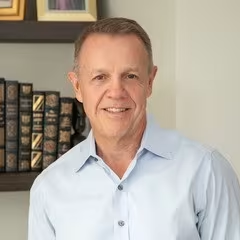Climate change isn’t an extinction scenario. It’s a scaling challenge. The real bottleneck now is capital, bankable projects, and clean energy that improves human life.
Bill Gates Is Right About Climate—But Here’s the Part Most People Miss
Bill Gates recently published an essay called “Three Tough Truths About Climate.”
It’s one of the rare climate pieces that is both data-driven and realistic, without the panic theater.
The central point is simple:
Climate change will not lead to human extinction.
But lifting billions of people out of poverty while decarbonizing the world will be the biggest infrastructure buildout in human history.
That is the real challenge—not the headlines, not the doomsday narratives, and not the political shouting.
Climate is a scaling problem, and scaling requires capital, technology, and policy that makes clean energy bankable.
Let’s break down Gates’ argument—and the piece everyone forgets to talk about.
The world needs more energy, not less
This is the truth almost nobody says out loud.
- Global energy demand will more than double by 2050
- Economic growth depends on electricity
- The fastest way to reduce climate vulnerability is to make countries wealthier
Gates puts it bluntly:
“You can’t reduce emissions by keeping people poor.”
If the goal is human welfare—not just carbon accounting—we need cheap, reliable, abundant power.
That means:
- Massive grid buildouts
- Energy storage at scale
- Distributed systems for the poorest regions
- Manufacturing powered by clean energy, not coal
You don’t get there by shrinking the energy supply.
You get there by rebuilding it.
The good news: technology is winning
This part isn’t widely known outside of energy circles:
- Solar and wind prices have dropped 90% in two decades
- Storage is falling fast
- In many regions, clean energy is the cheapest electricity on Earth
Gates notes that in the past 10 years, projected global CO₂ emissions for 2040 have dropped over 40% due to innovation. That progress happened quietly and without enough credit.
The climate story is no longer “renewables are too expensive.”
The story is now:
renewables scale fastest when the financing structure is bankable.
That’s where policy and project finance matter.
The bottleneck is no longer technology
It’s capital, transmission, and bankable deals
Breakthroughs exist:
- Zero-emission steel
- Clean cement
- Green hydrogen
- Low-carbon fertilizers
- Methane-reducing livestock feed
- Advanced nuclear
- Industrial heat pumps
But innovation without financing is just a lab result.
Projects do not move without:
✅ predictable revenue
✅ risk mitigation
✅ creditworthy counterparties
✅ standardized contracts
✅ tax incentives that pencil for investors
This is why U.S. tax-credit policy changed everything.
By allowing transferability, credits became a real financial asset class—not just a tax-technical tool for large corporates.
In many cases, this reduced the cost of capital and accelerated adoption.
The hardest part ahead: scaling to poor countries
Climate risk is not evenly distributed.
Rich nations can adapt.
Poor nations suffer most.
But here’s the uncomfortable reality:
If a nation cannot afford electricity, climate spending is irrelevant.
To protect lives:
- Energy must be cheap
- Systems must be reliable
- Financing must be accessible
- Risk must be insurable
A good climate strategy is also a good development strategy.
Clean energy is not a luxury product—it’s critical infrastructure.
Stop measuring success only in carbon
This is where Gates is exactly right.
If every climate conversation ends at “X tons of CO₂ avoided,” we’ve missed the point.
The real metric is:
- How many lives improved?
- How many communities electrified?
- How many people protected from heat waves, crop loss, and instability?
- How many nations gained energy independence?
Human welfare is the North Star.
Carbon is just one variable.
The takeaway: we don’t need fear
We need scale
Climate change is not an extinction scenario.
It’s a buildout scenario.
We will need:
- Gigawatts of new generation
- Terawatt-hours of storage
- Steel, copper, transmission lines
- Billions in capital
- Insurance, indemnities, and offtake contracts
- And a financing system that makes it profitable to build
When clean energy makes financial sense, it scales.
When it scales, people thrive.
That’s the future worth betting on.
Closing
Gates is right to remind the world that this isn’t about apocalyptic doom.
It’s about engineering, economics, and global development.
The world doesn’t need less energy.
It needs more energy—clean, abundant, reliable—and accessible to every nation.
If we measure success by human welfare, we will solve climate faster than fear ever could.
Enjoyed this newsletter? Get Involved.
- Subscribe to MacroMashup: one email a week, zero noise.
- Book a call with Dakota Ridge Capital if you’re investing in clean energy or want to optimize for tax strategy
- Watch us on YouTube, or tune in via Spotify / Apple
- Collaborate with us at contact@macromashup.com
📤 Enjoyed this? Share it via LinkedIn, repost on X → here, or forward it via email.

.svg)
.svg)
.svg)


.avif)
.svg)
.svg)



